On the afternoon of November 8, 1918, a celebratory conga line wound through a three-mile-long throng on Manhattan’s Fifth Avenue. From high-rise windows, office workers flung makeshift confetti, first ticker tape and then, when they ran out, torn-up paper. They weren’t rejoicing over the close of the influenza pandemic, although the city’s death rate had begun to fall. That afternoon, New Yorkers let loose for another reason: the end of the Great War.
The jubilance proved short-lived. A report from the United Press had prematurely declared an armistice in Europe; in reality, it would be a few days more before the war officially ended. “For the moment,” reported the New York Times, “the whole population of New York was absolutely unrestrained, giving way to its emotions without any consideration of anything but the desire to express what it felt.”
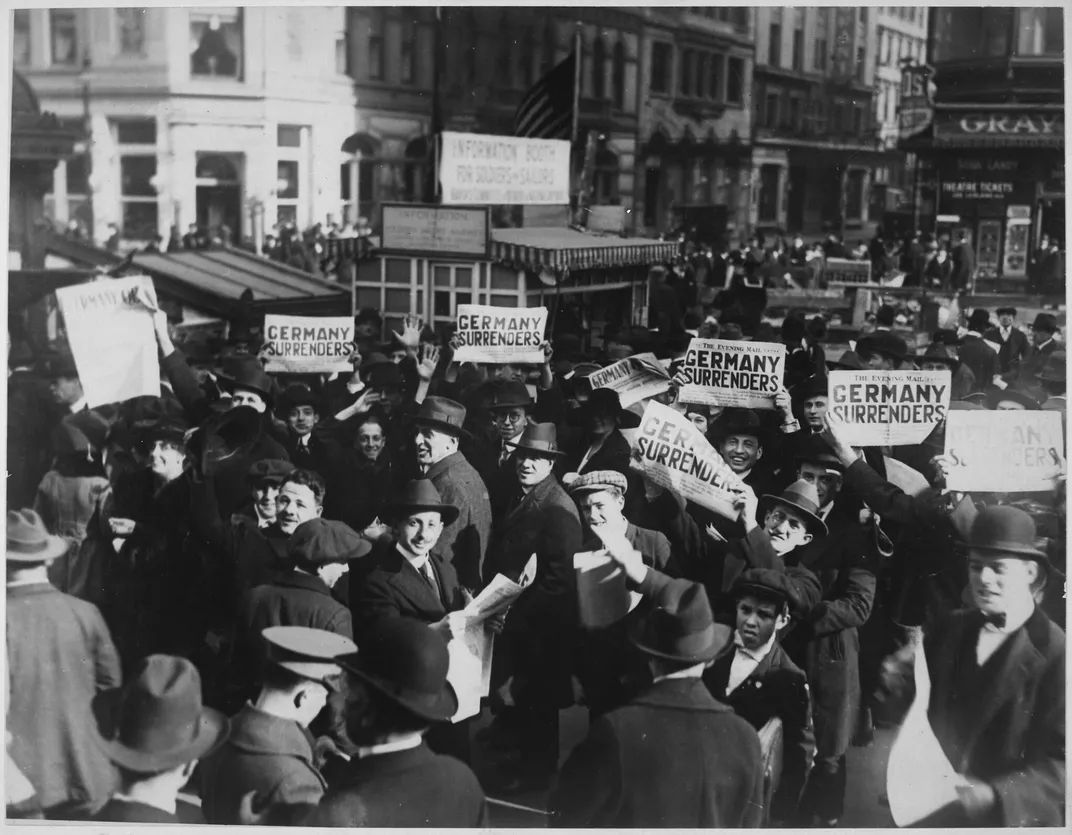
In that same edition of the Times that detailed the celebration and described fake caskets for Kaiser Wilhelm being hoisted through the streets, a smaller headline documented 1061 new cases and 189 deaths from the influenza epidemic, still afflicting Americans coast to coast. “About twenty persons applied to the Health Department yesterday personally or by letter to adopt children whose parents have died during the epidemic,” the paper read.
Just a week earlier, over the East River in Queens, purpled bodies had piled up in the overflow shed of Cavalry Cemetery, enough that the mayor brought in 75 men to bury the accumulated corpses.
Together, the end of the war and the influenza pandemic closed out a tumultuous decade and introduced a new era with an indelible reputation: the Roaring Twenties.
* * *
On social media and in conversations from behind the shelter of masks, many Americans bat around the idea that the nation is poised for a post-Covid-19 summer of sin, spending and socializing, our own “Roaring 2020s.” On the surface, the similarities abound: A society emerges from a catastrophic pandemic in a time of extreme social inequality and nativism, and revelry ensues. But, historians say, the reality of the 1920s defies easy categorization. “The experiences of the 1920s are uneven,” says Peter Liebhold, curator emeritus at the Smithsonian’s National Museum of American History. “If you make gross characterizations, you’re dead wrong.”
If the influenza pandemic shaped that uproarious decade, its impact cannot be neatly measured. The misnamed “Spanish flu” left some 675,000 Americans dead. The sickness particularly afflicted young people; the average age of victims was 28. That death toll dwarfs the number of U.S. combat deaths (53,402, with some 45,000 additional soldiers dying of influenza or pneumonia) during World War I. Despite that disparity, authoritative histories of the era relegated the influenza pandemic on the fringes in favor of a narrative dominated by the war.
F. Scott Fitzgerald once described the 1920s as “the most expensive orgy in history.” Between quotes like that and canonical works like The Great Gatsby, the author has an outsized role in how the Roaring Twenties are viewed today. “I blame Fitzgerald for a lot of [misconceptions]” about the decade, says Lynn Dumenil, a historian who revisited the decade in her book The Modern Temper: American Culture and Society in the 1920s. In her class at Occidental College, Dumenil would show the feverish, champagne-fueled party scene in Baz Luhrman’s movie adaptation of Gatsby, as good an example as any of the “unnuanced” pop-culture vision of the decade as a flapper bacchanal*. “There’s this notion of the ’20s as a wild period where everyone is just grabbing everything they can get,” adds Nancy Bristow, history chair at the University of Puget Sound. This idea is broad-brush hyperbole of a reality that held true for only a certain class of Americans—not everyone.
“The 1920s were really a time of social ferment,” says Ranjit Dighe, an economic historian at the State University of New York, Oswego. Shifts in women’s roles, leisure time, spending and popular entertainment did characterize the ’20s, so those exaggerated aspects of the decade, while focused on a primarily white and upper/middle-class experience, do have a firm basis in reality. “Only [in the 1920s] did the Protestant work ethic and the old values of self-denial and frugality begin to give way to the fascination with consumption, leisure and self-realization that is the essence of modern American culture,” Dumenil, David Brody and James Henretta write in a book chapter on the era.
Notably, these changes had been brewing for years, leaving historians with no obvious link between the Roaring Twenties’ reputation and the pandemic.
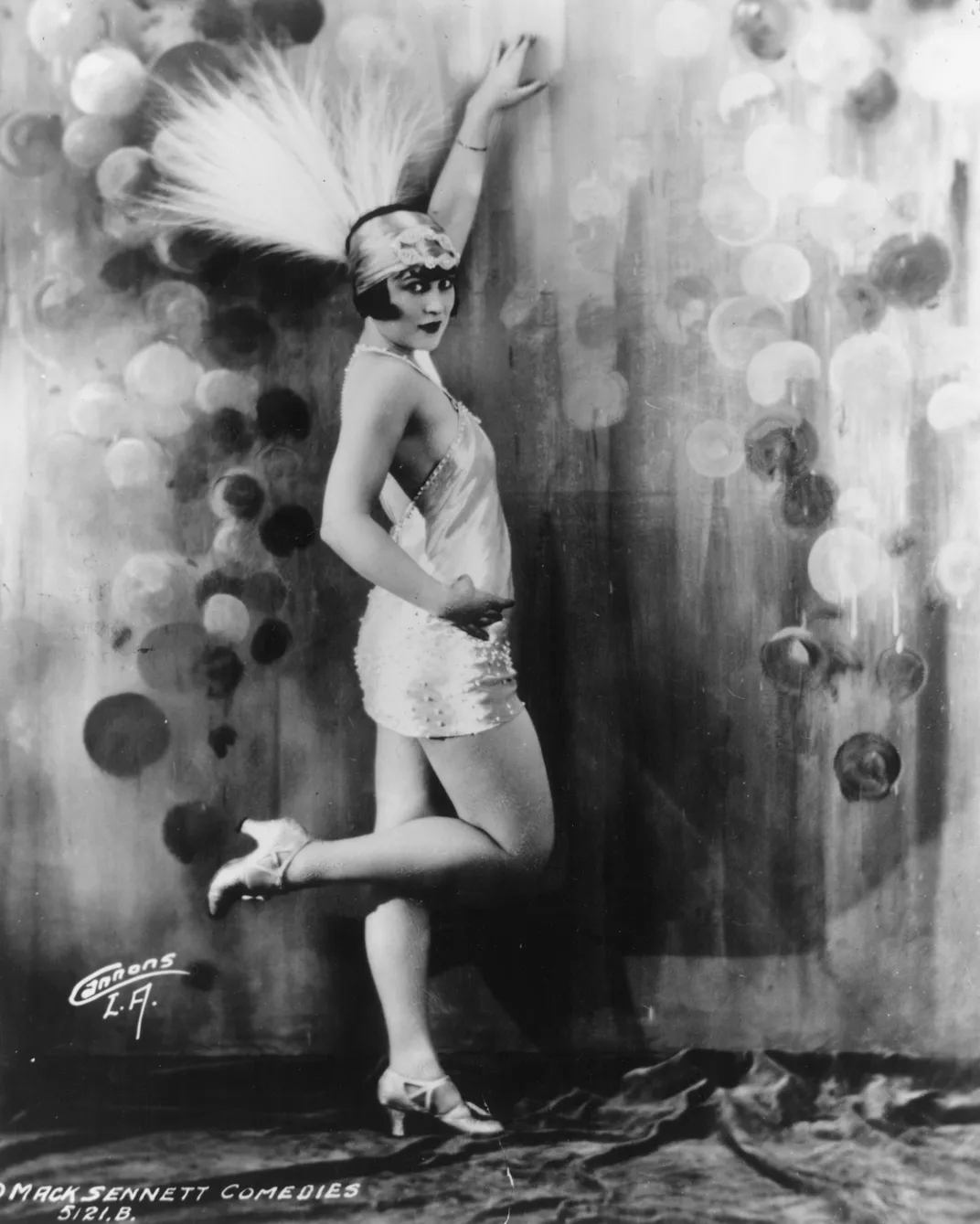
/https://tf-cmsv2-smithsonianmag-media.s3.amazonaws.com/filer/34/e0/34e071d4-980a-4eca-b7ad-3636d4d1407a/nmah-et2011-45097-000001.jpg)
The “New Woman” of the 1920s, typically white and middle- or upper-class, with bobbed hair and newfound social freedom, departed drastically from Victorian norms. With the ratification of the 19th Amendment in 1920, (white) women had won the right to vote, and divorce rates reached one-in-seven by the mid-decade. “Respectable” women now wore makeup, and flappers clad in shockingly short skirts wore sheer pantyhose and smoked. More traditional or religious Americans lamented the prevalence of “petting parties.” But, as Dumenil writes in The Modern Temper, the idea of the “New Woman” took root before the 1920s. As early as 1913, commentators noted that the nation had struck “sex o’clock”; in the next three years, Margaret Sanger opened one of the country’s first birth control clinics and went to jail days later. These social changes applied mostly to more well-off white women, since other groups of women had been working and having premarital sex well before the ’20s.
Prohibition is the backbone of 1920s mythology, which paints drinking as a glamorous indiscretion. Organizations like the Women’s Christian Temperance Union and the Anti-Saloon League had long agitated to dry up the nation’s heavy boozing. Such groups argued that an alcohol ban would reduce societal ills like domestic violence. They also capitalized on xenophobia, since saloons were political hubs for working-class people and immigrants. National success came in 1920, when a ban on selling alcohol went into effect.
The decade’s raucous reputation gets some things right: Prohibition did transform Americans’ relationship with alcohol, turning drinking into a coed, social activity that moved out of disreputable saloons into homes, Dighe says. New York alone housed more than 30,000 speakeasies, many run by gangsters.
But that’s not the whole picture. Alcohol consumption itself decreased in the ’20s. In rural areas, the reinvigorated Ku Klux Klan took it upon itself to enforce the Volstead Act and act upon anti-immigrant hostilities. (Historian Lisa McGirr has argued that Prohibition helped kickstart the penal state and the disproportionate imprisonment of people of color and immigrants.) This dark side of Prohibition highlights an undercurrent of nativism and racism throughout the ’20s: White Oklahomans murdered several hundred Black neighbors in the 1921 Tulsa Race Massacre, and national quotas enacted in 1924 slammed the door closed on immigration. And those speakeasies in Harlem, with their chorus girl extravaganzas, bathtub gin, and Madden’s No. 1 beer? White patrons came there to go “slumming.”
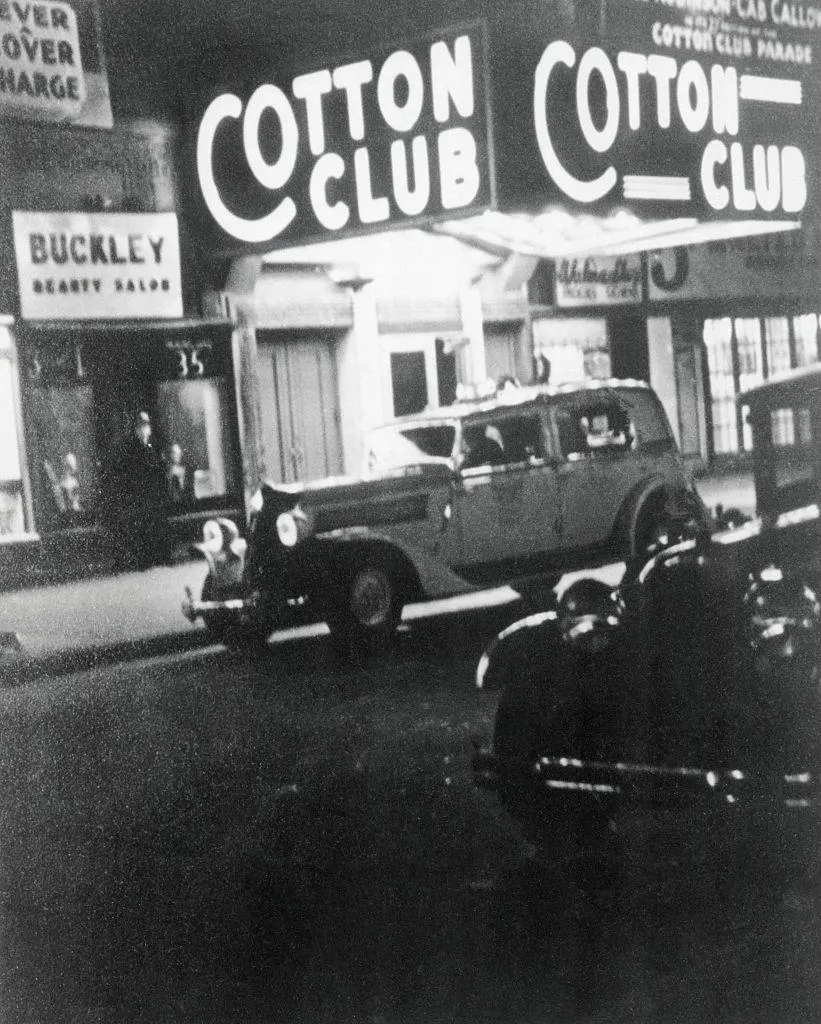
The ’20s were “a prosperity decade, no question about that,” says Dighe. Gross national product ballooned by 40 percent between 1922 and 1929. The Second Industrial Revolution—most notably electricity and the advent of the assembly line—led to a manufacturing boom. Cars could be put together in 93 minutes instead of half a day, and by the close of the decade, one-fifth of Americans owned an automobile, which they could use for leisure activities like traveling. The popularization of personal credit also enabled middle-class Americans to buy consumer goods in droves. The government, too, under the Republican administrations of Presidents Harding, Coolidge and Hoover, shared this spirit of wholehearted materialism, boosting corporations and otherwise taking a light touch to policy that corresponded with the prevailing anti-government sentiment of the time.
Examine this upbeat picture of consumerism more closely, though, and you’ll realize the economic boost of the ’20s was checkered. A sharp recession kicked off the decade, caused partially by the declining demand for American agricultural products after the war’s end brought European farming back into commission. (The limited data on the 1918 influenza’s impact indicates that for the most part, it caused short-term, not prolonged, business losses; scholars haven’t linked it to the prosperity of the following decade.) Then, as now, income inequality reached staggering rates. By the end of the ’20s, despite per capita income nearly doubling, the top 1 percent of U.S. families reaped more than 22 percent of the nation’s income.
The wealthy and middle class profited. African Americans, many of whom had moved to Northern cities for work as part of the Great Migration, newcomers to the country, and farmers did not share in that prosperity. The 1920 census marked the first time more than half the country’s population lived in urban areas. For rural Americans, particularly farmers, the ’20s “were roaring as in a roaring fire that was burning people out,” says curator Liebhold.
* * *
The influenza pandemic’s origins remain contested, but the disease spread quickly through the world beginning in the spring of 1918, striking crowded military camps and then American cities and towns in three to four waves. The “purple death” got its name from the colors victims’ oxygen-starved bodies turned as their lungs drowned in their own fluid, and it killed quick, sometimes within hours of the first symptoms. Americans donned masks, schools and public gathering places temporarily shut down, and one-third of the globe fell ill. Doctors, with a flawed understanding of the virus’ cause, had few treatments to offer. Life insurance claims rose sevenfold, and American life expectancy decreased by 12 years.
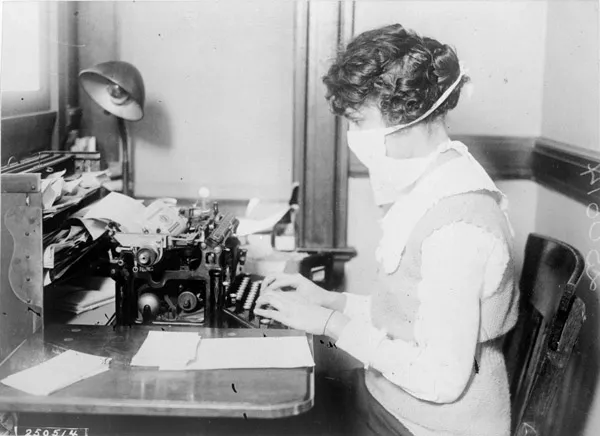
Yale sociologist and physician Nicholas Christakis hypothesizes that the 1918 pandemic falls into an ages-old pandemic pattern, one that our Covid-19 present may mimic, too. In his 2020 book, Apollo’s Arrow: The Profound and Enduring Impact of Coronavirus on the Way We Live, he argues that increasing religiosity, risk aversion and financial saving characterize times of widespread illness. Christakis expects the Covid-19 crisis to have a long tail, in terms of case numbers and social and economic impacts. But once the brunt of the disease abates in the U.S., which he forecasts for 2024, “all of those trends will reverse,” Christakis says. “Religiosity will decline… People will relentlessly seek out social interactions in nightclubs, in restaurants, in bars, in sporting events and musical concerts and political rallies. We might see some sexual licentiousness.”
Like the 1920s, Christakis also predicts lasting social and technological innovations will characterize this decade—think of how remote work and mRNA vaccines might shift status quos permanently. “People are going to want to make sense of what happened,” he says, positing that “we’ll likely see an efflorescence of the arts” post-pandemic. That’s not to say our A.C. (After Covid-19) reality will be all rosy. “We’ll be living in a changed world,” Christakis says, and that includes the lives lost (about 1 in 600 in the U.S.), the economic havoc wreaked, shortfalls in education, and the number of people left disabled due to Covid-19.
In Apollo’s Arrow, Christakis points to an Italian tax collector and shoemaker’s remembrance of the period that followed the Black Death in 1348 as an example of the collective relief we might experience at the pandemic’s end. Agnolo di Tura wrote:
And then, when the pestilence abated, all who survived gave themselves over to pleasures: monks, priests, nuns, and lay men and women all enjoyed themselves, and none worries about spending and gambling. And everyone thought himself rich because he had escaped and regained the world, and no one knew how to allow himself to do nothing.
* * *
Mapping the post-pandemic events of the 1920s onto the nation’s post-Covid-19 future resembles trying to trace the path of a nearly invisible thread in an elaborate tapestry. At its height, the influenza pandemic routinely made front-page headlines nationwide, says J. Alexander Navarro, a historian who co-edited the University of Michigan’s digital Influenza Encyclopedia, but by the beginning of 1919, before the pandemic had run its course, those articles grew shorter and less prominent.
“When we look around, unlike the Great War, there are no monuments to the flu; there are no museums to the flu; there are no heritage sites to the flu; there’s not a stamp for the flu, all the signs we associate with commemoration,” Guy Beiner, a memory studies scholar, said during a presentation hosted by the Institute of Holocaust, Genocide, and Memory Studies at the University of Massachusetts, Amherst. He describes the pandemic as an instance of “social forgetting,” an event not wiped from memory but simply left unspoken.
Even historians largely neglected the 1918 pandemic, until Alfred Crosby reignited the field in a 1976 book, where he captured these contradictions:
Americans barely noticed and didn’t recall ... but if one turns to intimate accounts, to autobiographies of those who were not in positions of authority, to collections of letters written by friend to friend ... if one asks those who lived through the pandemic for their reminiscences, then it becomes apparent that Americans did notice, Americans were frightened, the courses of their lives were deflected into new channels, and that they remember the pandemic quite clearly and often acknowledge it as one of the most influential experiences of their lives.
One of the many theories about why 1918 influenza faded from historical memory holds that the trauma of World War I subsumed it. “I don’t think you can divorce the experience of the 1918 pandemic with that of the war,” says Navarro, noting that in places like Denver, Armistice Day coincided with the day social distancing restrictions eased. Public health messaging intertwined the two crises, calling mask-wearing “patriotic” and promoting slogans like “Help Fight the Grippe: Kaiser Wilhelm’s Ally.” In Harper’s editor Frederick Lewis Allen’s 1931 account of the previous decade, Only Yesterday, he labels the Twenties as the “post-war decade” and mentions the pandemic a grand total of once.
“My guess is it did not sit with the story that Americans tell about themselves in public. It’s not the story that they want to put in fifth-grade U.S. history textbooks, which is about us being born perfect and always getting better,” says Bristow, who wrote American Pandemic: The Lost Worlds of the 1918 Influenza Epidemic. Americans believed themselves “on the verge of putting infections disease to rest forever,” she explains, and instead, “We couldn’t do anything more about it than anybody else.” Indeed, President Woodrow Wilson, who held the office throughout the multi-year pandemic, never once mentioned it in his public comments.
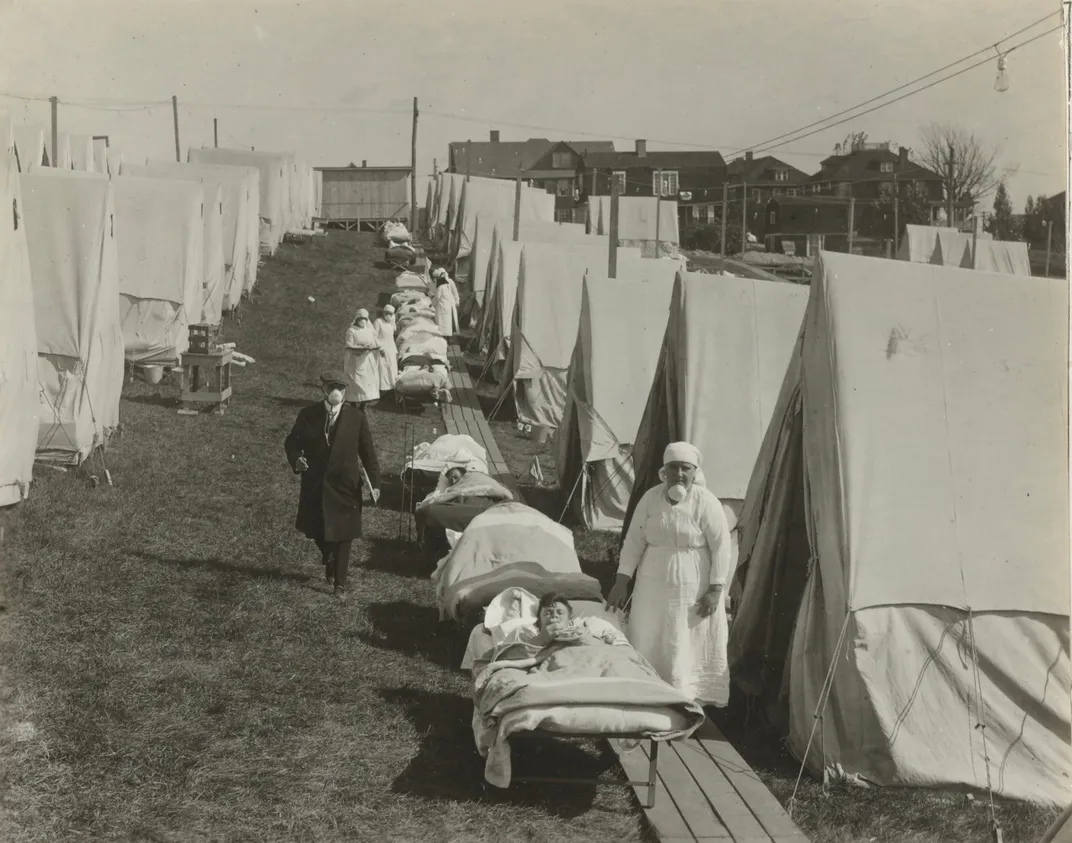
Navarro floats another theory: Deaths from infectious disease epidemics happened more routinely then, so the pandemic may not have been as shocking. (According to data compiled by the New York Times, despite the much higher proportion of deaths from the 1918 influenza, the Covid-19 pandemic has a larger gap between actual and expected deaths.) Without a solid scientific understanding of the flu’s cause—evangelical preacher Billy Sunday told congregants it was a punishment for sinning—people struggled to make sense of it.
Multiple historians pinpointed another significant discrepancy between the scarring impact of the Covid-19 pandemic and that of the 1918 influenza: Whereas many Americans today have remained masked and distanced for over a year, the 1918 influenza raged through communities quickly. Restrictions were lifted after two to six weeks, Navarro says, and most people still went in to work.
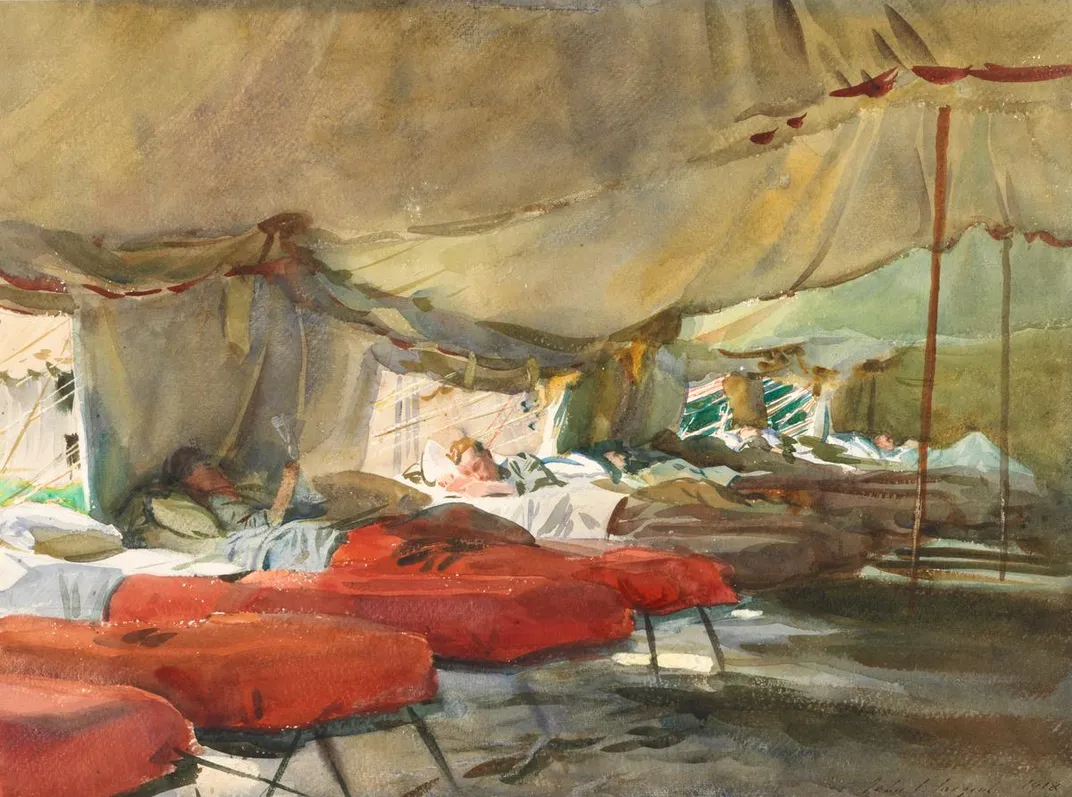
“Talking about [influenza] being forgotten is different from whether it had an impact,” Bristow says. But she hasn’t found much evidence that concretely ties the under-discussed pandemic to the societal upheaval of the ’20s. “One of the places you could find it would be in the writing, and we don’t see it there,” she says. Hemingway briefly remembers “the only natural death I have ever seen” from the flu, but in a minor work. In Pale Horse, Pale Rider, Pulitzer Prize-winner Katherine Anne Porter draws on her bout of near-fatal flu, writing “All the theatres and nearly all the shops and restaurants are closed, and the streets have been full of funerals all day and ambulances all night.” But that novella wasn’t published until 1939.
“When you look at the canon, of cultural literature, of cultural memory,” Beiner points out, “none of these works appear in it.”
Arts and culture undoubtedly flourished in the ’20s as a shared American pop culture emerged thanks to the advent of radio broadcasting, widely circulated magazines and movies. The first “talkie” debuted in 1927 and joined paid vacations and sports games in an explosion of for-fun entertainment options. The Harlem Renaissance gave the nation artists like Duke Ellington and Lena Horne, who performed at the glitzy speakeasy The Cotton Club. While a Clara Bow movie about WWI, Wings, won Best Picture at the first-ever Academy Awards, Bristow says the pandemic didn’t appear much in cinemas, and musical references are also few and far between. (Essie Jenkins’ “The 1919 Influenza Blues” presents a rare exception to this rule: “People was dying everywhere, death was creeping through the air,” she sings.)
Young people, who’d watched peers die from influenza, spearheaded these cultural shifts. “After the Great War cost millions of lives, and the great influenza killed some 50 million [worldwide], many—particularly young people—were eager to throw off the shackles of the old and bring in the new,” says John Hasse, curator emeritus at the National Museum of American History. But keep in mind, Hasse explains, that the jazz music and dancing that characterized the performing arts of the decade had roots that preceded the pandemic, like the Great Migration, jazz recording technology, and evolving attitudes about dancing in public.
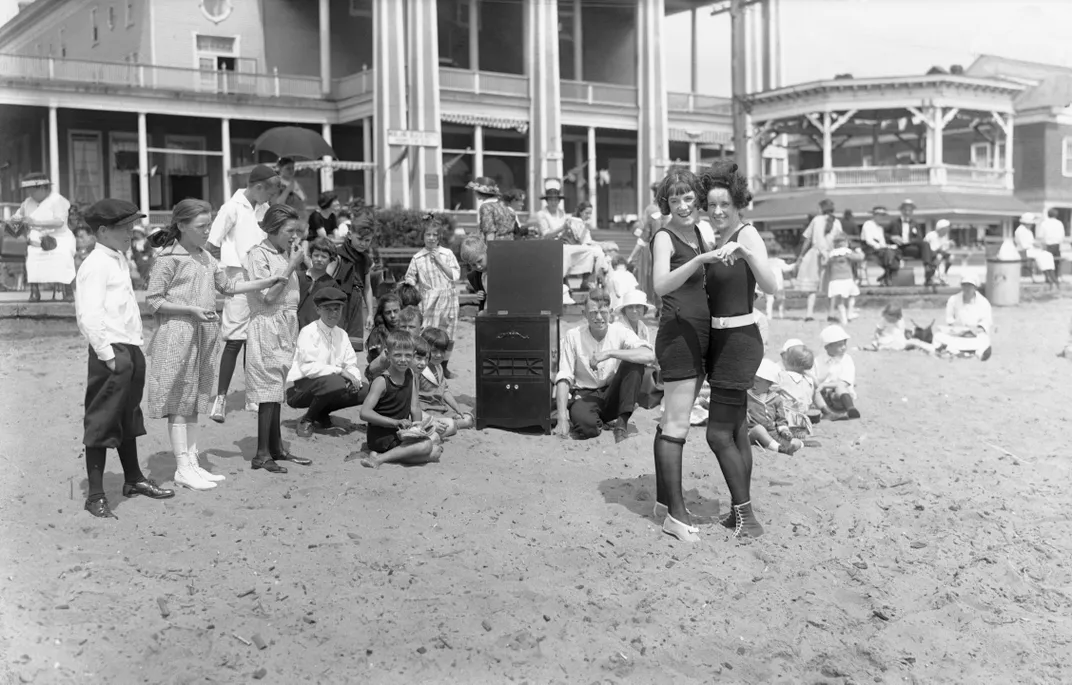
Just because the memory of the flu wasn’t typeset, filmed or laid on a record doesn’t mean it didn’t bruise the American psyche. About, all 1 in 150 Americans died in the pandemic; one New Yorker recalled neighbors “dying like leaves off trees.”
Pandemics don’t come with a consistent pattern of mental health side effects because humans have responded with different public health measures as our understanding of infectious diseases has evolved, says Steven Taylor, a University of British Columbia, Vancouver professor and the author of 2019’s The Psychology of Pandemics. But he expects the Covid-19 pandemic to psychologically impact between 10 and 20 percent of North Americans (a number sourced from ongoing surveys and past research on natural disasters). Typically, one in ten bereaved people go through “prolonged grief disorder,” Taylor notes, and for every pandemic death, more family members are left mourning. Studies show that one-third of intensive care Covid-19 survivors exhibit PTSD symptoms, and first responders already report deteriorating mental health. Even people with a degree of insulation from this firsthand suffering might still experience what Taylor calls “Covid stress syndrome,” an adjustment disorder marked by extreme anxiety about contacting Covid-19, xenophobia and wariness of strangers, traumatic stress symptoms like coronavirus nightmares, concern about financial security, and repeated information or reassurance seeking (from the news or from friends).
A pandemic slowed to a simmer will, of course, mitigate some stressors. Like Christakis, Taylor says he anticipates an increase in sociability as people try to claw back the “positive reinforcers” they’ve been deprived of in the past year. (Others, like people experiencing Covid stress syndrome, might struggle to recalibrate to yet another “new normal.”) His surveys of North American adults have also indicated a silver lining known as “post-traumatic growth,” with people reporting feeling more appreciative, spiritual and resilient, although it’s unknown whether this change will become permanent.
“Most pandemics are messy and vague when they come to an end,” says Taylor. “It won’t be waking up one morning and the sun is shining and there’s no more coronavirus.” We’ll doff our masks and let down our guards piecemeal. Overlay Covid-19 and the 2020s with the influenza pandemic and the 1920s and you’ll see unmistakable parallels, but looking closely, the comparison warps. If there were a causal link between the influenza pandemic and the Roaring Twenties, clear evidence of a collective exhalation of relief hasn’t shown up under historical x-rays.
The historical record tells us this: Some 675,000 people in the U.S. died of influenza then, and “in terms of a mass public mourning, people just went on with their lives” Navarro says. An estimated 590,000 Americans will have died of Covid-19 by the third week of May. How Americans will remember—or choose to forget—this pandemic remains an open question.
*Editor's Note, May 12, 2021: A previous version of this piece misstated the university where Lynn Dumenil taught. She is a professor emerita at Occidental College, not the University of California, Irvine.
/https://tf-cmsv2-smithsonianmag-media.s3.amazonaws.com/filer/7a/15/7a158c15-84f6-4a44-8a4a-defae06756d7/mobile_20s.png)
/https://tf-cmsv2-smithsonianmag-media.s3.amazonaws.com/filer/2a/f7/2af7b5d3-3d86-4f22-b605-0fcd4d8a17e7/roaringtwenties2.png)

